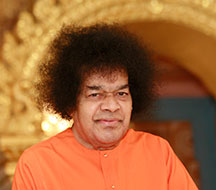
We attain Brahma Tattwa through chanting of Gayathri Mantra
Puttaparthi, Poornachandra Auditorium (Upanayanam )
Description
‘Brahmavid brahmaiva bhavathi’ meaning to know the Brahman, is to know oneself. One attains the stage of Brahma only when one realises one’s true nature. When one asks the question as to when do one become deserving of Brahma, there is a small example to illustrate this. A girl before being married would be a stranger to the husband, but after marriage deserves the right to the claim half of the husband’s property. What is it that marks out the earlier stage of a stranger and the later stage of deservedness? It is the sacred thread put around the neck during the marriage that confers the girl the deservedness. Likewise so long as one stays away from surrendering to God, one remains a stranger. Once the thread of surrender is worn, one is entitled to half of the divine powers of God. One becomes deserving and secures the unlimited rights. Therefore, one must attain the stage of surrender to God by one’s efforts. One attains the stage of fulfillment by regularly chanting the Gayathri mantra.
Topics
-Gayathri
-
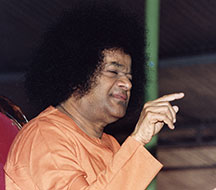
Meaning of Dheeyoh Yonah Prachodayath
00:00:44Shraddha, Rutham, Sathyam, yoga and mighty power are the five components of the sacred intellect. This intellect or buddhi is depicted in the Gayatri mantra as “Dheeyoyonah prachodayath”. Just as the sunlight dispels the darkness of the world, so also the light of the intellect dispels the darkness of ignorance in oneself.
-
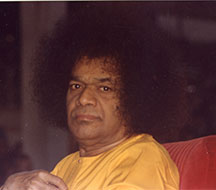
Explanation of Bhur Bhuvah Suvah
00:02:19In the Gayathri mantra, “Bhur bhuva suvaha”, the first word “Bhur” refers to materialisation, relationship and body. The body which is the materialisation is merely the negative and is made up of elements. What is body made up of? The body has all the elements like iron, lime, oil, lead, soap, and phosphorous etc. Four Lux soaps are also needed! The body is a combination of all the above elements. Two buckets of water and a one bucket of lime are also required. A combination of all the above metals and elements result in the materialisation of the body. Hence all this amounts to “Bhur”; ‘Bhur’ means bringing together the elements. It refers to the earth principle. “Bhuvaha” is the ‘vibration’, a power that sustains the earth and is the life source. The aspect that makes the materialisation and vibration function properly is the ‘radiation’ called ‘pragnyanam’, the spiritual content. The vedas stated this fact as “pragnyanam brahma” meaning pragnyanam is brahma. Therefore the presence of the radiation- ‘pragnyanam’ and the vibration- ‘life’ makes the materialisation called the ‘body’ function properly. Hence the worlds depicted by the Gayathri mantra namely the ‘Bhur loka’; the ‘bhuvaha loka’ and the ‘suvaha loka’ do not exist as separate entities. All is within one self. The whole universe is within oneself. Divinity and demonic qualities both exist in oneself as is the qualities of monkeys and animals.
-

Explanation of Gayathri Mantra
00:01:57Swami tells that in Gayathri Mantra “om bhur bhuva suvaha”, ‘bhur’ means earth; ‘bhuvaha’ means ‘suvarloka’; ‘suvaha’ – heaven. One tends to think that there are many worlds. The root cause for such thinking is the lack of scholars today who can explain the inner meaning and clarify the doubts. ‘Bhur’ means ‘bhooloka’, the earth implying the material world. So the word ‘bhur’ indicates the materialization. ‘Bhuvaha’ relates to the mind; that which causes movement. It is the life force, the vibration. The world is ‘materialisation’; ‘prana’, the life is ‘vibration’. ‘Suvaha’ represents the ‘knowledge’ or ‘wisdom’. It is also called as ‘pragnyanam brahma’ (knowledge is brahma). This is called as ‘radiation’. The materialisation, the vibration and the radiation are all inherent in man. So essentially, all the three do not exist elsewhere separately but in man himself. This is termed as ‘saaroopya, salokya, saamepya and saayudhya’- proximity, identity and the merger.
-

Swami's sweet words to all vatus and their family members
00:01:17As it is already for the young children, Swami does not wish to continue for long. There would be a meeting later at 5 pm in the evening and hopes that the children eat and rest well to attend it. The children should have their meals together as brahmacharis. Swami extends the invitation to the parents and the relations of the young children to have lunch as Swami’s prasadam along with the children. Swami blesses and concludes the discourse.
-

Why Gayathri Mantra is given to children at tender age
00:02:53There is an inner meaning in initiating the young children into chanting the Gayathri mantra. The mantra concludes with ‘...Dheeyoyona prachodayath’ meaning, prior to the initiation to the mantra, one who is backward intellectually, a tad lazy mentally and has other negative traits becomes one of sharp intellect, active , zealous and smart after the initiation. There is darkness before the sun rise likewise there is the darkness of ignorance and unknowing prior to the giving of the Gayathri mantra. The rays of the sun dispel the darkness and fill the world with light and brightness. So also the rays of the Gayathri mantra, ‘...dheeyoyona prachodayath’, dispels the darkness of ignorance and blossoms the faculties of knowledge, wisdom and learning. Swami hopes that the children initialised into the Gayathri mantra will take up the practice of chanting the mantra twice a day and reap the benefits thereof namely one with good conduct, good education and wisdom and become the ideal citizens of the country.
-

Sandhya Vandanam and ways to put Gayathri mantra into day to day practice
00:02:18There are some people who feel that they don’t have time to chant the Gayathri mantra. One does have sufficient time. Where there is a will there is a way!! If one really wants to do a thing one will make time. One wastes a lot of time. If one can utilise a fraction of time spent idly towards this end, one can purify oneself. One can chant the mantra while taking bath everyday; that way one not gets to chant the mantra but also gets the benefit of doing ‘abisheka’ or holy bath to the Goddess. It becomes a form of offering to Gayathri mantra when one chants the mantra before part taking food. Even if one chants or doesn’t chant any other mantra, chanting the Gayathri mantra sanctifies one’s life. It is verily the day of second birth called ‘dwija’ to all here as they have been given the sacred Gayathri mantra. Hence by making worthy of this second life one becomes deserving of the third stage of ‘Vipratwa’. By making proper use of the Vipratwa one proceeds to the Brahma.
-

Chanting Gayathri Mantra three times a day removes all your sins
00:03:00It is necessary to chant the Gayathri mantra either in the early hours of the morning or in the evening hours. During the mid day time this chanting has been viewed as salutations to the departed. But when the mantra is taken up as Sadhana, the morning and evening hours are considered auspicious. It is good for youngsters to chant the mantra at least a three times in the morning and evening hours. When one buys things on loan, not only does the loan increase but the interest also increases. But on the other hand when one buys things rendering cash, there is no issue of loan or its interest. When one buys on loan, one’s earnings are spent for paying up the loan and the interest accrued. It is also possible that paying the interest itself takes a lot of time making the actual loan clearance a terrifying aspect. So when one clears the dues as and when one buys things, there is no loan or the interest. Likewise when one chants the Gayathri mantra three times in the morning and in the evening, one atones for the sins committed and also gets rid of the accrued sins. In this way man attains the form of ‘akarma’ by doing so. It also leads one to the path of ‘Nishkama karma’, doing actions without attachment. By chanting the mantra, one gets sanctified then and there. Chanting the mantra in the morning and evening hours is beneficial in overcoming the hurdles in one’s life and also in achieving the goal of life.
-

Different names of Gayathri and their significance
00:03:12When one utters the name Gayathri, one derives happiness from the atmic principle and the oneness that exists in all beings. The Goddess Gayathri takes the names of Gayathri, Savithri and Saraswathi at the three different time periods. Gayathri is also known as ‘Pancha mukhi’ or the five faced one. The first face signifies ‘Om’. The second is ‘Bhur bhuva suvaha’. The third face is “Tat savitur varenyam’. The fourth one is ‘bhargo devasya dheemahi’. “Dheeyoyona prachodayath’ is the fifth face and hence the form of five faces. The five faces of Goddess Gayathri signify the five life forces. As She protects and fosters the five life forces, She is called as ‘trayati iti Gayathri.’ meaning Gayathri the protector and benefactor. While protecting the Goddess is called as ‘Savithri’. One may have read about the story of Savithri bring Satyavan from the realms of the dead. The Savithri depicted in the scriptures is the essence of the five life forces. The inner significance of the episode depicted in the scriptures is that Savithri protects guides those who tread the path of truth. While fostering and nurturing intellect, She is called as ‘Gayathri’. She is ‘Savithri’ when protecting the life. And She is ‘Saraswathi’ when protecting one’s words. Hence the Goddess is described as the embodiment of all that is divine as she in the forms of ‘Gayathri’, ‘Savithri’ and ‘Saraswathi’ at the three periods of time, protects the speech, life, and intellect innate in humans.
-

Who is Gayathri Devi?
00:00:47When one utters the name Gayathri, one derives happiness from the atmic principle and the oneness that exists in all beings. The Goddess Gayathri takes the names of Gayathri, Savithri and Saraswathi at the three different time periods.
-
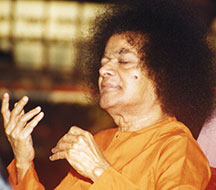
Gayathri mantra brings unity in diversity
00:00:25The Gayathri mantra is the sacred mantra that proves the underlying unity in the diversity. One attains divinity and sanctity through the principle of unity.
-

Significance and explanation of Gayathri Mantra
00:01:50One must chant the Gayathri mantra at fixed time during the period of 4 am to 8 am and at a set time during the period of 4 pm to 8 pm. Gayathri mantra is the very embodiment of all forms of God. It does not belong to any caste or any religion or to any gender. It universal and has got nine chief attributes. ‘Om’, ‘Bhur’, ‘bhuvaha’, ‘suvaha’, ‘tat’, ‘savitur’, ‘varenyam’, ‘bhargo, ‘devasya’—these are the nine hues of the mantra. ‘Dheemahi’ pertains to meditation. ‘Dheeyoyona prachodayath’ is the prayer for wisdom. Therefore Gayathri mantra is made up of the three: a description, a meditation and a prayer.
-

Time for Sathwa, Rajas and Tamo activities
00:04:39The three attributes of ‘Sathwa’, ‘rajas’ and ‘tamas’ are present in time too. What is the meaning of time being ‘Sathwic’? The three attributes have twenty four hours to go by and each of them have eight hours by themselves. The Sathwic has eight hours, the Rajasic has eight hours and Tamasic has eight hours; that is to say that the twenty four hours of the day are equally distributed among the three attributes of time. When is the eight hours of Sathwic time? Four hours from 4 am in the morning to eight am and another four hours from 4 pm to 8 pm constitute the Sathwic time. The above mentioned period of time of eight hours is termed as Sathwic time. The time from 8 am to 4 pm is the Rajasic time of eight hours. These eight hours during the day have been considered as the Rajasic time. It is during this Rajasic time that all the beings do things that need to be done by them. Not merely men but also the plants, animals and the like do their respective work during these eight hours. The factory workers, the agriculturists, the farmer and the like do their respective jobs in these Rajasic hours. Hence one can find that everybody has an experience of this Rajasic time. The time from 8 pm to 4 am is called as the ‘Tamasic’ time. Based on one’s experience one can know that the above period of time is Tamasic as the chief quality associated with this period is sleep. Therefore one understands that sleep is Tamasic in nature. Hence the noble and sacred activities undertaken in the Sathwic time, i.e. from 4 am to 8 am and 4 pm to 8 pm, further one’s progress towards the goal of life. There is no doubt that humanity will attain divinity when one understands the division of time for various activities and engages in the prescribed activities.
-

Significance behind chanting Gayathri Mantra three times a day
00:06:00It has been laid down that the Gayathri mantra has to be chanted three times a day viz, morning, afternoon and in the evening with a rule that it be chanted at the convergence of two different times. “Sandhya’ is the confluence of two different times. The first one is the ‘pratah sandhya’. It is a point of time where the transition of the night into day takes place. The ‘saayam sandhya’ is the point of transition time of daylight into night. “Maadhyahna sandhya’ is the transition of morning to afternoon. Man is the embodiment of the three attributes. The three attributes are not only applicable to man but also to time. The three attributes of ‘Sathwa’, ‘rajas’ and ‘tamas’ are present in time too. What is the meaning of time being ‘Sathwic’? The three attributes have twenty four hours to go by and each of them have eight hours by themselves. The Sathwic has eight hours, the Rajasic has eight hours and tamasic has eight hours; that is to say that the twenty four hours of the day are equally distributed among the three attributes of time. When is the eight hours of Sathwic time? Four hours from 4 am in the morning to eight am and another four hours from 4 pm to 8 pm constitute the Sathwic time. The above mentioned period of time of eight hours is termed as Sathwic time. The time from 8 am to 4 pm is the Rajasic time of eight hours. These eight hours during the day have been considered as the Rajasic time. It is during this Rajasic time that all the beings do things that need to be done by them. Not merely men but also the plants, animals and the like do their respective work during these eight hours. The factory workers, the agriculturists, the farmer and the like do their respective jobs in these Rajasic hours. Hence one can find that everybody has an experience of this Rajasic time. The time from 8 pm to 4 am is called as the ‘tamasic’ time. Based on one’s experience one can know that the above period of time is tamasic as the chief quality associated with this period is sleep. Therefore one understands that sleep is tamasic in nature. Hence the noble and sacred activities undertaken in the Sathwic time, i.e. from 4 am to 8 am and 4 pm to 8 pm, further one’s progress towards the goal of life. There is no doubt that humanity will attain divinity when one understands the division of time for various activities and engages in the prescribed activities.
-
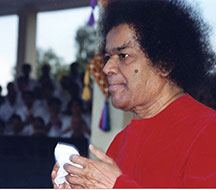
Gayathri mantra confers on you the second birth
00:01:22The initiation into the chanting of the Gayathri mantra signifies the dawn of man’s second birth. ‘Gayathri chandasa mata’ meaning Gayathri mantra is the very embodiment of the quintessence of the vedas. It is verily the mother of vedas. ‘Ga’ means ‘Jiva’ or the forms of the individual. Hence, Gayathri is that which protects and fosters all life forms. So, one must realise the truth that, being initialised into the Gayathri mantra is like being born again. When one chants the mantra, bound to a certain code of conduct and rules, then one qualifies oneself for the study of vedas.
-
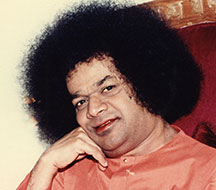
Three birth's in one life
00:03:10The most significant karma in a man’s life lies in his natural birth from the mother’s womb. This is the natural birth, a state without any rules. The initiation into the chanting of the Gayathri mantra signifies the dawn of man’s second birth. ‘Gayathri chandasa maata’ meaning Gayathri mantra is the very embodiment of the quintessence of the vedas. It is verily the mother of vedas. ‘Ga’ means ‘jiva’ or the forms of the individual. Hence Gayathri is that which protects and fosters all life forms. So, one must realise the truth that, being initialised into the Gayathri mantra is like being born again. When one chants the mantra, bound to a certain code of conduct and rules, then one qualifies oneself for the study of vedas. One attains the third life as a ‘Viprudu’, when one chants the vedas. When this is considered as the third birth, one must follow the path of gradual study of vedas, knowing the significance of the mantras therein and lead one’s life in accordance with the said principles. By studying the vedas one would succeed in attaining ‘Brahma’. It is only when one acquires the state of ‘brahma’ that one can be called a ‘Brahmana’. It is important that one is a Brahmana not only by virtue of his birth but also by virtue one’s actions. One should also realise and continue to realise the truth that being called a Brahmana by virtue of birth and actions is truly the path to the divinity.
Topics
- Analogies
- Atma
- Attachment
- Balvikas
- Bhaja Govindam
- Bhajans
- Body
- Character
- Company
- Compassion
- Culture
- Day to day
- Desire
- Devotees
- Devotion
- Dharma
- Discipline
- Discrimination
- Doctors
- Education
- Faith
- Festivals
- Forbearance
- God
- Gratitude
- Guru
- Health and healthcare
- HIS Life
- Human values
- India
- Karma
- Love
- Mahabharata
- Man
- Meditation
- Mind
- Music
- Musicians
- Namasmarana
- Nature
- Parents
- Philosophical concepts
- Pleasure and Pain
- Practice
- Ramayana
- Religion
- Sacrifice
- Sadhana
- Sai Organization
- Saints
- Sathya
- Science
- Senses
- Service
- Sevadal
- Shanthi
- Shirdi Baba
- Society
- Spirituality
- Students
- Thoughts
- Time
- Unity
- Upanishad
- Vedas
- Vices
- Yoga
- Youth
